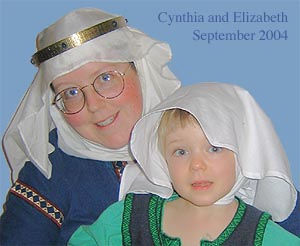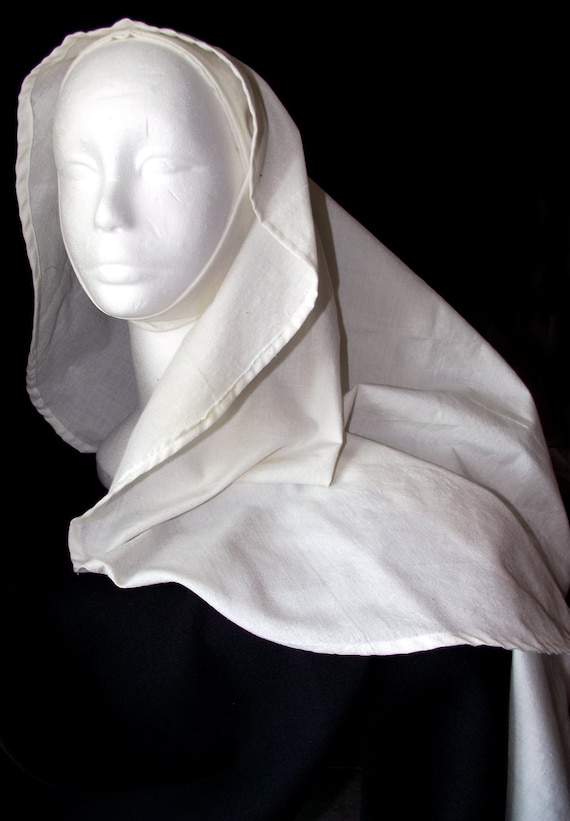
MEDIEVAL WOMAN SITEMAP • THE BOOK • THE BLOG • ARTIFACT COLLECTION • TUTORIALS•TALKS• NOTICEBOARD
A full-square yard of 5 mummy China Silk. White, one size. Hand wash, hang to dry, cool iron. Circlet not included. There are 368 medieval veil for sale on Etsy, and they cost $32.31 on average. The most common medieval veil material is metal. The most popular color? I received a few questions about the St. Birgitta cap, veils, wimples, and hairstyles, so I made a video showing one way I use these to get dressed! Medieval knots are often made from fine cord and can use up to seven or more passes. Although I have never seen turk's head knots made from braided cord on purses before, I did spot them on a c. 1500 rosary in the Museum of London earlier this year. In my attempt to recreate these knots in the first image, you can see that my fingerloop braid.
COIFS | Medieval Veils, Wimples and Gorgets Veils A law passed between 1162 and 1202, in the municipal statues of Arles, which forbade prostitutes to cover their hair with a veil lest they should be mistaken for a woman of good virtue and encouraged good women to snatch the veils from the heads of women of suspected ill-repute. Many Middle Eastern countries of the world today require that a woman's hair remain covered in public. Discussions with many liberated women in these Muslim countries show that they actively choose to continue to wear a veil as a show of modesty and decency and not as a symbol of oppression by the men of their society. It was only the Western society which discontinued the wearing of the veil and wimple. In this respect, wearing a veil was seen as a sign of good breeding and is no different to the generation of our grandmothers who were firmly hatted, stockinged and gloved whenever they left the house. Veil shapes and sizes At some times during the Middle Ages, veils worn by the wealthier and more fashionable were pinned in many overlapping layers, as shown in the detail at left in the 1435 painting of A Man and a Woman by Robert Campin. It is unclear why such a fashion developed. At certain periods of the Middle Ages a veil with two bands of blue around the border was required by law to be worn by Jewish women as an identifying marker of their faith. Coloured veils were not entirely unknown, but it is certain that they were not the most popular. Decorative features on veils A great deal of the artwork and statues in Prague during the middle ages were shown to have quite a large degree of decorative features- notably ruffles, beaded or pearl edging and in some cases, gold embroidery around the edges. Complaints came from many of the clergy, including this from a 13th century preacher in Germany, Berthold of Regensburg:
A French song of the 13th century tells of a traveling merchant who sold kerchiefs with flowers and birds embroidered on them, although most contemporary illustrations of that time period show plain white of varying degrees of fineness and fabric. The Goffered Veil or Nebule Many illuminations, manuscripts, brasses and effigies show this style of headdress. The detail shown here at left is a statue dated at around 1370 to 1430 of the Madonna and Child showing a veil which is ruffled on the top and at the ends. Many English churches also show this type of veiling. Lady Despencer wears the goffered veil in her effigy at Tewkesbury Abbey, as does a brass of Margaret Torrington in Great Berkhampstead Church, Hertfordshire. Pleated or frilled veils The detail, at right, shows a close up of the pleated ruffles which appear to have been pleated separately and then sewn on to the main veil. This kind of pleating could be either a single layer or many layers. Wimples & Gorgets The wimple or gorget was widely worn by all medieval women of good breeding and it was only later in time that it was dropped for daily wear by the general populace and retained by nuns and holy women. It was not uncommon, although, for a married woman to wear one if she so chose. Effigies and paintings from the 13th century right through to the 15th century show women wearing wimples. The difference between a wimple and a gorget Wimple shapes and sizes This detail at right is taken from a brass memorial of Elizabeth de Northwood from 1335. She is modestly wearing a gorget, as is expected of a married woman, but still shows a deal of her carefully arranged hairstyle. It is important to note that although we can see some of her hair, it is dressed and not out or flowing in any way. Wimple fabrics and colours |
 I started doing this veil style about 3 years ago and it's been my go-to ever since. Elina at Neulakko does the folding bit in her tutorial also. If I think back, hers was probably my inspiration, so if you haven't checked hers out, I suggest you do so!
I started doing this veil style about 3 years ago and it's been my go-to ever since. Elina at Neulakko does the folding bit in her tutorial also. If I think back, hers was probably my inspiration, so if you haven't checked hers out, I suggest you do so! In my veil classes, I talk about using 'head underwear'- my favorite of which is the huvet (or Saint Birgitta's cap)- and I also discuss how to properly use a fillet to keep your veil in place. It occurred to me after the last teaching of this class, however, that only the 'formal' methods of wearing a veil required the use of any underwear. When I placed this quick veil on my head that same evening for court (in which I was actually called up, so thank god I decided to put a veil on!), I realized that if you secure the veil on your head using the tight-around-the hairline/pin-at-the-back method (which I utilize in the video), you can achieve a large number of looks and never need the assistance of an extra piece underneath.
In my veil classes, I talk about using 'head underwear'- my favorite of which is the huvet (or Saint Birgitta's cap)- and I also discuss how to properly use a fillet to keep your veil in place. It occurred to me after the last teaching of this class, however, that only the 'formal' methods of wearing a veil required the use of any underwear. When I placed this quick veil on my head that same evening for court (in which I was actually called up, so thank god I decided to put a veil on!), I realized that if you secure the veil on your head using the tight-around-the hairline/pin-at-the-back method (which I utilize in the video), you can achieve a large number of looks and never need the assistance of an extra piece underneath.I often grab a veil and some pins and 'play' in front of the mirror- using the 'non-underwear' technique to see how many styles I can come up with. I've come up with well over a dozen that I would actually wear, and many more that were interesting to say the least. In fact, just this evening, I created one that I aptly called 'The Pretzel'. Is it period? No. Is it fun to wear? Yes. Sometimes it's difficult to draw the line. Keep and eye out- The Pretzel might show up at an event near you.
Medieval Veil Styles

Nun Wimple For Sale
The point is that, while there are certainly 'rules' to follow if you're trying for authentic veil styling, those aren't the be-all end-all of possibilities, and they certainly don't hold the monopoly on beautiful, girly styles that are in keeping with the spirit of the Middle Ages. The quick veil style in the video straddles that line. And occasionally, I like setting up shop on that line.
